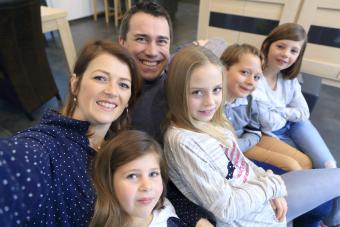
What a family looks like will grow and evolve over time and is significantly influenced by the specific culture being experienced in a certain time period. While there used to be one family structure that dominated all others, significant changes in family structure have taken place over the past few decades.
Changes in Family Structure
Families have significantly shifted in terms of structure, going from two-parent households to a more eclectic expression of what it means to be a family. While in the 50s and 60s, there was more of an emphasis on a family including two parents and children, now, families have a much more diverse structure.
How Families Have Changed Over the Years?
Families have changed significantly over the years. According to Pew Research, examples of these shifts include:
- In the 1960s, 73% of children lived with two parents in their first marriage.
- In the 1980s, 61% of children lived with two parents in their first marriage.
- Currently, less than half of children live within two-parent households with parents who are in their first marriage.

What Causes Changes in Family Structure?
Reasons for change in family structure:
- Advancements in and access to birth control
- Availability of career opportunities for women
- Infidelity or other relational issues that lead to a break up or divorce
- Remarriage with children involved can change two-parent households into blended and/or single-parent families
- Death of a child or partner
- Opting to cohabitate instead of marry
- Adoption
- Creating your own non-blood related family due to familial issues and/or estrangement
- Legalities that shift; for example, allowing same-sex couples to marry and adopt
- Sperm donor availability and access
- The cultural environment depending on the time period (Is divorce more acceptable, is being a single parent, or adoption, or simply cohabitating the new norm, or seen as acceptable?)
Has the Definition of Family Changed Over Time?
The definition of family can be viewed as something deeply personal, meaning that each unique individual may have their own take on what a family means to them. According to Pew Research, in the United States the traditional" family was what dominated in the 1950s and 1960s with about 73% of children living within two-parent households. Currently, two-parent households are not the norm, with the vast majority of families being single parent, blended, cohabitating, remarriage, and partners without children, while the two-parent household is less than half of what families in the U.S. self-identify as. Family can also be:
- Friends who are non-related who become each other's family due to estrangement or other issues within their family of origin
- Same sex or opposite-sex married partners who do not opt to have children
- Same sex or opposite sex cohabitating partners with or without children
- Single parents who adopt or utilize a sperm donor
- Multi-generational family households
 10'000 Hours/ DigitalVision via Getty Images
10'000 Hours/ DigitalVision via Getty Images
How Does the Economy Affect Changes in Family Structure?
The economy and family structure have a circular relationship with both entities impacting each other. For example:
- Mass economic crises can lead to higher levels of family strain and increase levels of divorce in some circumstances.
- Mass economic crises can decrease levels of divorce as a family unit pools its resources to stay afloat in some circumstances.
- Unemployment and level of education of both partners can also impact family structure during economic expansion and crises.
- Economic booms may lead to higher levels of independence for younger individuals (for example, an individual or couple may purchase a home, get married, and/or have children).
How Are Families Changing?
Family structures have shifted over time for a variety of complex reasons that interact with each other within a given time period. The norm in terms of family structure is constantly changing, and what is considered typical now will likely continue to shift over time.







